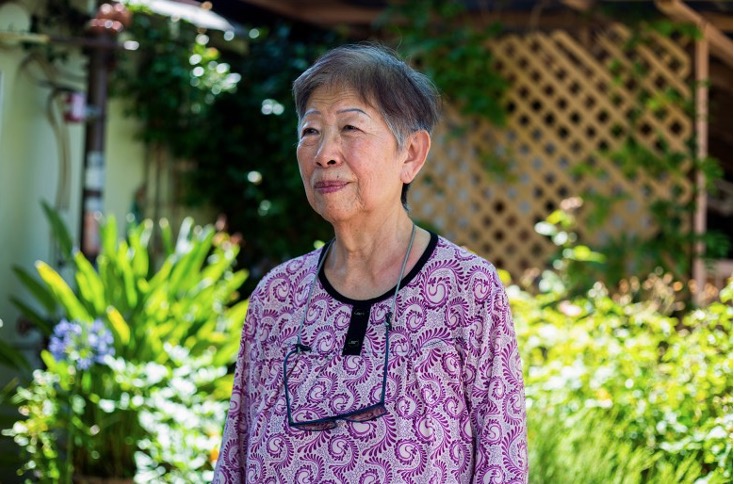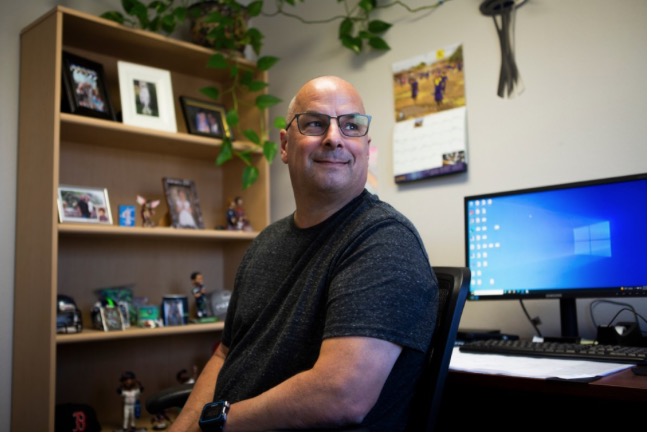CommentsMENTAL HEALTH - In early March, Gov. Gavin Newsom unveiled a controversial proposal to compel people with serious mental health issues into care and housing.
Mental health advocates, mayors and family members who stood alongside him at the press conference at a San Jose behavioral health treatment program heralded the plan, known as CARE Court, as a visionary move.
But some county officials say they were stunned.
“They really sprung it on everybody,” said Farah McDaid Ting, public affairs director at the California State Association of Counties, who said lawmakers didn’t consult or even give her organization a heads-up.
Four months later, the bill to establish CARE Court has sailed through all of its policy committees in the Legislature, secured unanimous approval from the Senate in May and is widely expected to become law later this summer. CARE Court — short for Community Assistance, Recovery and Empowerment Court — has garnered enthusiastic support from leaders of more than 45 cities, many of whom face fiery criticism over their handling of homelessness. Many family members, who for decades have felt stymied by strict eligibility rules for conservatorship, are also celebrating the new plan.
But county representatives continue to ring alarm bells about their ability to implement the proposal, especially as an aggressive timeline comes into focus. A handful of counties have registered support for the proposal, including Marin, Contra Costa and San Diego.
Many of the counties’ concerns come in the form of questions: Will the necessary housing be available? Where can they find the outreach workers and therapists needed to serve the population, given massive statewide shortages of both? What happens to all the struggling people who want housing and treatment, and already can’t get it?
Disability rights advocates are raising fundamental questions about the very premise of CARE Court: Is it effective to compel people into care? Is involuntary treatment a violation of their civil rights?
But many of those who support the concept say the practical questions feel especially pressing right now, as the Legislature continues its deliberations. While many details are still in flux, the gist of the proposal remains the same as initially outlined. Anyone from family members to first responders could petition a civil court to create a court-ordered care plan for people who meet specific criteria. These include a diagnosis of schizophrenia or other psychotic disorders, along with being at risk of harming themselves or others or being unlikely to survive on their own. Participants would receive legal counsel and a range of mental health services, medication and supportive housing. Following a series of check-ins during a yearlong period, the participant could either graduate or be referred to an additional year of treatment. If a person refuses to comply, or “fails out”, they could be considered by the court for conservatorship.
Conversations about CARE Court have been peppered with frequent references to people living on California’s sidewalks and under freeway overpasses. But the administration hasn’t been clear about how much of a dent the proposal would make in the state’s massive homelessness crisis. Prior to the pandemic, more than 161,000 people in the state were estimated to be homeless on any given night; that number has likely grown since. The administration says the program will serve 7,000 to 12,000 people with the most acute mental health needs. Homelessness isn’t a prerequisite to participate.
The administration says the proposal represents a crucial step toward addressing one of the state’s great moral and policy failings: the vast ranks of unhoused people languishing with serious mental illness and without care.
“What CARE Court is saying is we must create a pathway wherein these individuals that live in the shadows and often die in the shadows, become a priority group,” said Dr. Mark Ghaly, secretary of the California Health and Human Services Agency, who has been championing the program on behalf of the Newsom administration.
CARE Court’s supporters say no more time can be wasted. Judge Stephen Manley, who started the state’s first mental health court in Santa Clara County nearly 25 years ago, notes the growing percentage of people in local jails and prisons with serious mental illnesses. Only by mandating that counties prioritize this population, he said, will anything change.
“People are always telling me it can’t be done,” he said. “To me it is a tragedy that we repeatedly, year after year after year after year, talk about this issue, do nothing, and all these individuals end up in the criminal justice system.”
Is there enough housing or will there be?
Perhaps the most prominent question that has emerged among legislators and advocates is whether there is enough housing available to get the CARE Court program started.
Short answer: No.
But the state believes that bringing CARE Court participants to the front of the line, along with making unprecedented investments in housing this year, will allow counties to meet the needs of this population. Opponents fear others awaiting voluntary services will be bumped to the back of the line, leaving their needs to intensify.
“I worry if it houses some but leaves others out, are we just reshuffling things?” said Margot Kushel, director of the Benioff Homelessness and Housing Initiative at Zuckerberg San Francisco General Hospital and Trauma Center.
While the new budget deal includes $65 million this year and $49 million in ongoing annual funding to cover training, court costs and legal representation, counties say the proposal doesn’t include any new funding for housing or services.
“There’s a new door being built onto a small house,” Ting said. “There’s no square footage, there’s no nothing, just a new door. That’s what’s kind of frustrating about the premise.”
The administration points skeptics to a $14 billion multi-year homelessness budget put together before the proposal’s announcement — which includes about $5 billion to build thousands of mental health treatment beds and homeless housing. This year’s budget includes $1.5 billion for interim treatment beds to hold patients over while permanent units come online. In response to counties’ concerns that even the bridge beds won’t be ready in time, the bill’s authors recently said counties would be phased into the program over two years, starting in July 2023.
Sen. Susan Talamantes Eggman, the bill’s co-author and a Stockton Democrat, says she believes counties are unhappy with the proposal because it finally holds them to account. It requires that they provide the care and housing a participant needs and if they don’t, face court fines of $1,000 per day. The money, collected by the state treasury, would eventually fund local services for the people CARE Court targets.
“We’re not just saying the person has the obligation to accept, we’re saying the system has the obligation to treat,” Eggman said during a recent hearing.
Counties counter that these penalties will only take away from their already limited resources to treat people.
While the bill says a county has to provide services during the program, courts can’t enforce a participant’s post-graduation plans. Advocates worry that without guaranteed housing people will wind up back on the streets, in emergency rooms and county jails.
“We’re going to release them back into the streets but we expect them to continue to adhere to the care plan and continue to be taking medication,” said Shonique Williams, a statewide organizer for Dignity and Power Now, who opposes the proposal. “But they’re going back into survival mode.”
The state doesn’t keep any sort of waitlist or even a count of treatment beds and housing that’s available to people exiting homelessness. As a result, it’s impossible to gauge the exact shortage in each county.
But a state-commissioned report released in January found that more than 80% of counties need more mental health treatment beds and homeless housing. A 2021 study from the RAND Corporation, a nonprofit think tank, showed the state lacks 5,000 psychiatric hospital beds and another 3,000 beds at residential treatment facilities and board-and-care homes. The shortage is most pronounced in the San Joaquin Valley and for patients with additional medical needs.
Michelle Doty Cabrera, executive director of the California Behavioral Health Directors Association, said one recent survey showed counties had 14,000 unhoused individuals with serious mental illnesses voluntarily participating in full service partnership programs. But they couldn’t find housing for more than half of these individuals, in part because many were screened out for reasons related to their mental health conditions, she said.
In Sacramento County, beds are increasingly rare at board-and-care facilities, where residents receive housing, 24-hour care and three daily meals.
“It is a needle in a haystack right now,” said Terry Fiscus, a behavioral health worker at Turning Point, which contracts with the county.
The less calm and rule-abiding the patient, the less chance they have of getting or keeping a spot, he said. On top of that, facilities have been closing at a rapid clip as housing prices soar and government-set reimbursement rates remain stagnant.
“There are a lot of people that want to come in all the time. We cannot take them,” said Jeanny Leung, who runs a board-and-care home in Sacramento.

Jeanny Leung is photographed outside of Praise Care Home in Sacramento on Thursday, June 23, 2022. Photo by Nina Riggio for CalMatters
“Squeezing blood from a turnip”
Housing isn’t the only big concern counties are raising. To run, CARE Court requires staff and resources.
Some counties say they fear that, without new funding, the program will end up draining resources from other populations, potentially including children and youth.
Cabrera, of the California Behavioral Health Directors Association, uses phrases like “squeezing blood from a turnip” and “robbing Peter to pay Paul.”
“We’re at our limit in terms of what we can do,” she said. “We need more resources to do more.”
The proposal’s proponents argue that there’s plenty of money to get things up and running. They say county mental health systems have had a huge influx of taxpayer dollars in the past two years, thanks to the Mental Health Services Act, a 1% tax on incomes over a million dollars that was enacted in 2004.
“Our millionaires in California seem to be doing very well for themselves,” said Karen Larsen, CEO of The Steinberg Institute, a nonprofit focusing on mental health policy, which supports the proposal. She notes that revenues from the tax have hit historic highs — they were at more than $4 billion this past year.
For two decades prior to assuming her current role, Larsen served as director of Yolo County’s Health and Human Services Agency. She believes counties can afford the costs of the new program.
“If they can prove they don’t have enough resources, I’d love to see it,” she said.
Phebe Bell, Nevada County’s behavioral health director, said she was, indeed, able to tap the influx of Mental Health Services Act funding to purchase a new house, providing beds for six people who were unhoused. But strict rules often limit what that pot of money can be used for, she said.
If the county has to pivot to focus on CARE Court mandates, she worries about who won’t be served.
“Many of our people are only stable because we have someone coming twice a day to deliver their meds and check in with them and make sure their furniture is upright,” she said.
When her county examined their full service partnership program, they found more than a third of the 78 people in their program at any given moment were inadequately housed, with many sleeping on the streets.
“I don’t have a single empty bed in our system of care,” she said. “Who exactly are we incorrectly prioritizing in our work right now?”
Both sides agree on one specific challenge: a massive shortage of mental health providers.
At the beginning of the pandemic, many counties worried they’d face significant shortfalls and preemptively laid off mental health workers.
Now, as need surges, staffing has simply not kept pace. Counties are finding themselves losing bidding wars for therapists being courted by everyone from school districts to telehealth start-ups to major providers like Kaiser. Burnout is driving others from the field entirely.
Some counties now face vacancy rates of 30% to 40% in their behavioral health workforce, and many of the nonprofits they contract with are in the same situation, Larsen said.
“I think it’s the biggest issue we face in mental health and substance use right now,” she said.
This year’s budget includes $1.5 billion to build out the state’s entire healthcare workforce, including hundreds of millions that target behavioral health.
The state’s public guardians and conservators have also eyed the CARE Court proposal warily. While they are not officially affected by the proposal, they say they expect the program could lead to a surge in new referrals.
The programs are already severely underfunded and understaffed, said Scarlet Hughes, executive director of the California State Association of Public Administrators, Public Guardians, and Public Conservators. Right now, caseloads hover at 65 to 85 individuals per caseworker, though in some counties they’re as high as 135. That translates into visiting a client every three or four months, she said.
“Any impact to our members is going to be significant because they’re underwater already,” she said.
What’s next?
Questions over implementation, in addition to the ongoing debate over civil liberties, have been woven through CARE Court’s journey from the start. That hasn’t stopped the Legislature from voting overwhelmingly in the bill’s favor. It is expected to easily clear its final hurdles: an appropriations vote later this summer, a floor-wide vote in the Assembly and a signature from the author, the governor himself.
But despite their ongoing questions, counties have conceded that CARE Court is coming whether they like it or not. They know they’re not likely getting any more money for housing and staffing. For now, they’re using the appropriations process to petition for more time and tools to implement the program.
The administration acknowledges that counties around the state face severe shortages. But it remains committed to the idea of a better way to serve the people who are struggling the most.
“California has done this before,” Ghaly said. “We’ve stepped up for the most vulnerable, the most overlooked many, many times. And we can do it again.”
has a mental illness. The state’s solution? Move them around.
2022
The mental health of children under 5 has typically been overlooked when it comes to state funding. Advocates aim to change that by
(Jocelyn Wiener writes about health and mental health for CalMatters, exploring the intersection between government policies and people’s lives. )
(Manuela Tobias is the housing reporter for CalMatters. Her stories focus on the political dynamics and economic and racial inequities that have contributed to the housing crisis in California.)e: Terry Fiscus, a counselor at Turning Point Community Programs, sits in his office in Sacramento on Thursday, June 23, 2022. Photo by Nina Riggio for CalMatters
























